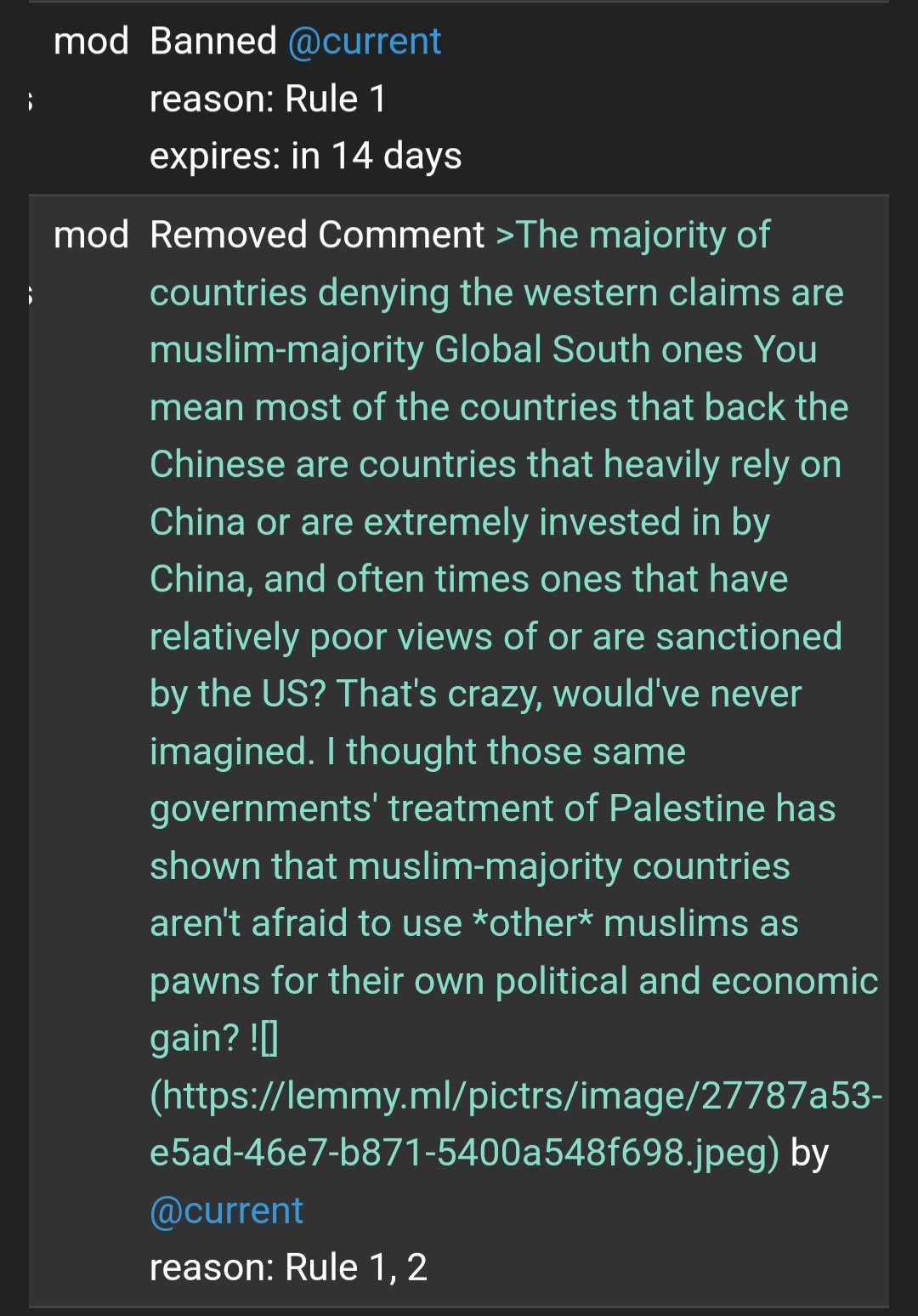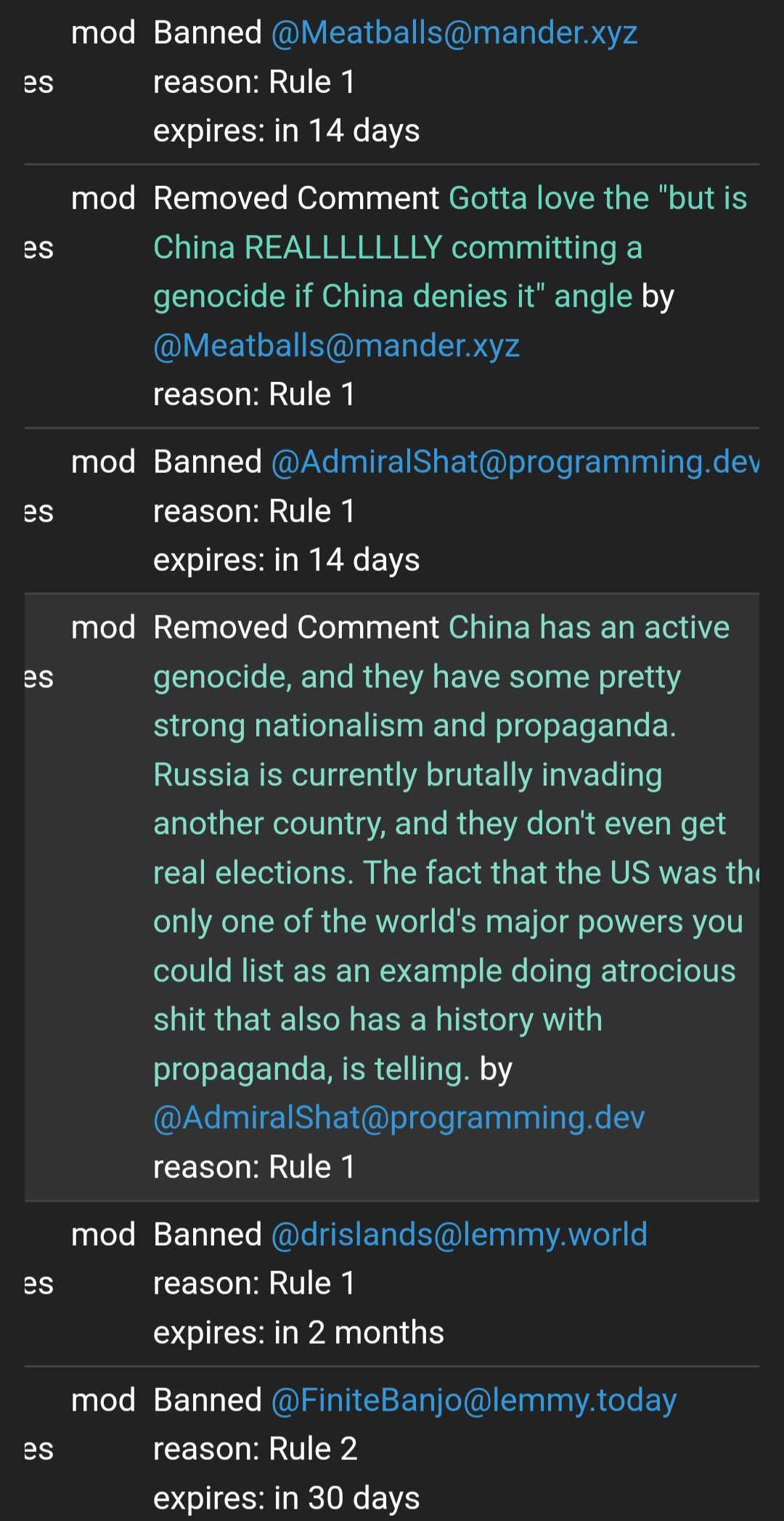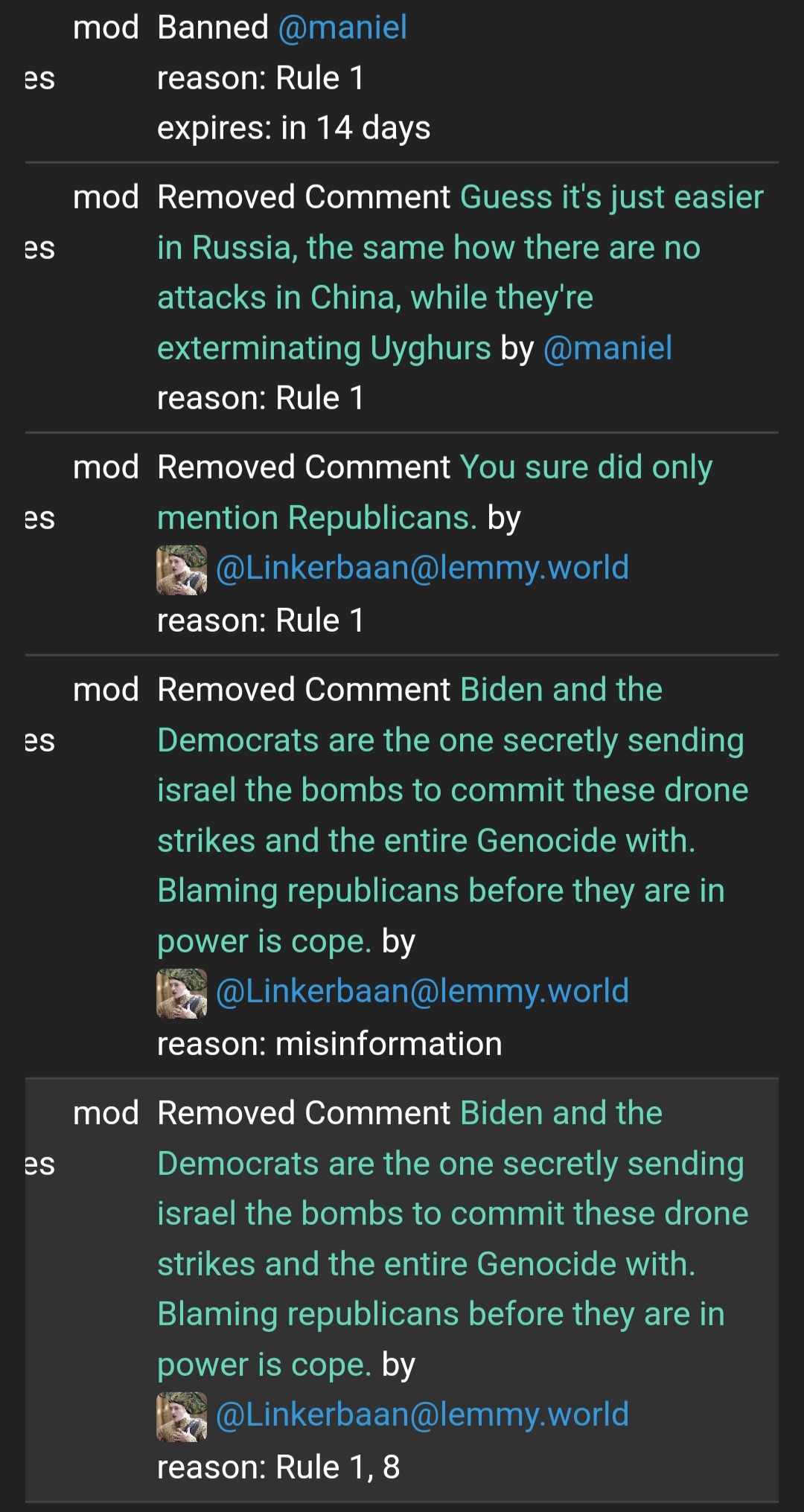It probably helps that every argument against it, as well as any claims against China at all, is being immediately removed anonymously by admins with the users getting banned LOL



"If you keep challenging my worldview, the next one's gonna be permanent"
The biggest selling point about functional languages for me is the type system, mainly algebraic/union types (which imo Scala does the best), pattern matching (and imo Rust does this best), and the incredible type inference, but also all the functional features. But I think the best part about F# specifically comparing it to C# is the removal of a shit ton of the boilerplate. Plus data is immutable by default, always a nice touch.
For F#, the special types may not be super relevant when interacting with C# libraries, but in general you can do everything in F# that you can do in C#, including all the OOP. It's just an added bonus that you basically get enums on steroids and pattern matching.
I find that writing in F#, even if I write basically the same code I would in C#, speeds up my design/programming a TON and makes it significantly more maintainable and easy to navigate. There's a lot less clutter and you don't have to worry about the layers upon layers of repetitive boilerplate.
The only downside IMO is that F# can have some terrible error messages. And of course, you have to learn F# syntax which can be a small pain if you've never used ML or Haskell (especially when it comes to function call syntax). But if you're mainly interfacing with C# libraries then it's no big deal. I started making an application only utilising C# libraries (mainly DB stuff) the same day I started using F# and it went relatively smoothly, although probably because Rust is the main language I used then.
This resource might help, although I can't say it's enough to completely learn the language: https://fsharp.org/learn/
Still doesn't change how wrong you are, as I've said it's easy to see things which are different shapes as different sizes despite being the same size, e.g. people seeing cups which are different heights&widths as different sizes despite holding the same volume.
These maps are made using data of the actual area taken, not the other way around. The statistics this map was based off of around 50%, so this map shows around 50% being regained. (The actual percentage according to the ISW was 54% before the end of 2022).
It literally says in the post that he states Ukraine retook half of the area that Russia has occupied since the invasion.
Also it only looks that way because of optical tricks, your eyes see the connected areas (which most of the red is) as larger than the areas which aren't connected as much (which a lot of the blue seems scattered). Looks about equal to me when you consider that. Plus map projections aren't usually very accurate when it comes to area anyways, most distort it a ton.
Crimea, Transnistria, and the area outlined in bright red in Donetsk/Alchevsk have been occupied by Russia since before the war. So it is around 50% of the area that they took back